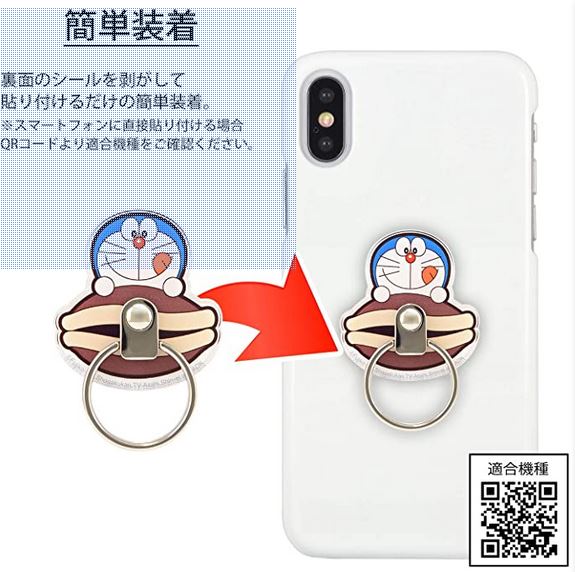If you’ve been playing Animal Crossing: New Horizons since sea creatures were introduced last July and have been keeping up with each month’s new arrivals, there’s a good chance that by now you’re only a couple of Critterpedia entries away from finishing your collection.
March has arrived, and with it the final two sea creatures make their New Horizons debut: the spider crab and the firefly squid. Players who’ve been keeping up with the critters will see their aquarium finally completed upon catching these two.
Whatever sea creatures you’re on the look-out for, this guide covers when to find them, how to catch them, and how much they sell for at Nook’s Cranny.
We’ve already mentioned the arrival of the firefly squid and the spider crab, the final two sea creatures to make an appearance in the northern hemisphere. Some old friends are also returning to the sea around your island this month: namely the turban shell, the chambered nautilus, and the umbrella octopus. There’s only one departure at the end of March — the red king crab — so be sure to catch one if it’s missing from your collection, as it won’t return until November.
Just like bugs and fish, sea creatures have become a staple collectible in ACNH. In addition to selling them for a tidy profit, you can donate them to Blathers at the museum, where they’ll be displayed in the two undersea rooms of the fish exhibit; and if you collect a scallop there’s a chance you’ll encounter Pascal, who’s eager to trade them for Mermaid DIY recipes.
Click the links below to skip to different sections in this page:
- Animal Crossing: New Horizons – Where to find sea creatures
- How to swim in Animal Crossing: New Horizons
- How to identify sea creatures in Animal Crossing: New Horizons
- Animal Crossing: New Horizons – Sea Creature price list
- How to catch the fastest sea creatures like the giant isopod
Animal Crossing: New Horizons – Where to find sea creatures
Sea Creatures can be found in the ocean, though you’ll need to dive down to find them. Each type can be found throughout the ocean, whether that’s close to the shore or a little further away. It’s worth noting that some creatures will try to speed away from you a little faster than others, with faster critters usually being the rare types.
Pearls that can be used in Mermaid DIY recipes can also be found by diving so hold on to those when you find them.
How to swim in Animal Crossing: New Horizons
To get into the water and find sea creatures, you’ll need a wetsuit, which you can pick up from Nook’s Cranny for 3000 Bells or Nook Shopping for 800 Nook Miles.
After that, you can head to a pier or the rocks near the ocean and press A to jump in. You can also walk in off the beach, though running and jumping off rocks or the pier is much more satisfying. Keep pressing A to swim around and press Y to dive if you see a shadow or some bubbles coming out of the water. Press A when you’re near the shadow to catch the critter.

How to identify sea creatures in Animal Crossing: New Horizons
Like fish, sea creatures in Animal Crossing: New Horizons can’t actually be seen and identified until after they’re caught. However, there are a few indicators that can help you narrow down which creature you’re looking at — or looking for.
The presence of a sea creature is indicated by bubbles, which are the only part of them visible above the water — in fact, they can be seen from shore before you even enter the ocean. The number of bubbles you can see at any one time are a good first indicator as to the size of the creature: three bubbles at a time mean a small or tiny creature; four bubbles means it’s medium-sized; and a continuous stream of bubbles means that the creature is large or XL.
A sea creature’s shadow can only be seen once you’re in the water and have dived down to take a closer look. Other than this, however, they work much like shadow sizes for fish, ranging from tiny to extra large.

Sea creatures will only start to move once you swim over or close to them. Once startled like this, they move at a variety of different speeds, which can broadly be categorised as slow, medium, and fast (there are also a few that don’t actually move at all). More subtle variations within speeds mean that the fastest sea creatures can be hard to catch without a method (see below).
Movement types also vary — some sea creatures move more jerkily with a stop-and-start motion, while others move smoothly and continuously. Ones that move jerkily can be slightly easier to grab hold of, especially if you’re lucky enough to catch up with one as it pauses. Otherwise, though, movement type is not nearly as big a factor as speed in identifying and catching a sea creature.
Animal Crossing: New Horizons – Sea Creature price list
There are over 40 sea creatures to catch in ACNH, and many are only available at certain times of day and during certain months. In this guide you can find a list of every sea creature, when they can be caught, and how much they sell for.

We’ve also included details on the number of bubbles produced by each creature, their shadow sizes, and their movement speeds, to further help you identify them.
Please note that this table currently covers the northern hemisphere only; to determine the months when a sea creature will be available in the southern hemisphere, add six months to those shown here.
| Sea Creature | Bells | Months active | Times active | No. of bubbles | Shadow size | Movement speed |
|---|---|---|---|---|---|---|
| Abalone | 2000 | January, June, July, August, September, October, November, December |
4 pm – 9 am | Four | Medium | Medium |
| Acorn Barnacle | 600 | All year | All day | Three | Tiny | No movement |
| Chambered Nautilus | 1800 | March, April, May, June, September, October, November |
4 pm – 9 am | Four | Medium | Slow |
| Dungeoness crab | 1900 | January, February, March, April, May, November, December |
All day | Four | Medium | Medium |
| Firefly Squid | 1400 | March, April, May, June |
9 pm – 4 am | Three | Tiny | Slow |
| Flatworm | 700 | August, September |
4 pm – 9 am | Three | Tiny | Slow |
| Gazami Crab | 2200 | June, July, August, September, October, November |
All day | Four | Medium | Medium |
| Giant Isopod | 12000 | July, August, September, October |
9 am – 4 pm | Four | Medium | Fast |
| Gigas Giant Clam | 1500 | May, June, July, August, September |
All day | Many | XL | Fast |
| Horseshoe Crab | 2500 | July, August, September |
All day | Four | Medium | Fast |
| Lobster | 4500 | January, April, May, June, December |
All day | Many | Large | Fast |
| Mantis Shrimp | 2500 | All year | 4 pm – 9 am | Three | Small | Fast |
| Moon Jellyfish | 600 | July, August, September |
All day | Three | Small | Slow |
| Mussel | 1500 | June, July, August, September, October, November, December |
All day | Three | Small | Slow |
| Octopus | 1200 | All year | All day | Four | Medium | Medium |
| Oyster | 2000 | January, February, September, October, November, December |
All day | Three | Small | Medium |
| Pearl | 10000 | All year | All day | Three | Tiny | No movement |
| Pearl Oyster | 2800 | All year | All day | Three | Small | Medium |
| Red King Crab | 8000 | January, February, March, November, December |
All day | Many | Large | Fast |
| Scallop | 1200 | All year | All day | Four | Medium | Slow |
| Sea Anemone | 500 | All year | All day | Many | Large | No movement |
| Sea Cucumber | 500 | January, February, March, April, November, December |
All day | Four | Medium | Slow |
| Sea Grapes | 900 | June, July, August, September |
All day | Three | Small | No movement |
| Sea Pig | 8000 | January, February, November, December |
4 pm – 9 am | Three | Small | Fast |
| Sea Pineapple | 1500 | April, May, June, July, August |
All day | Three | Small | Slow |
| Sea Slug | 600 | All year | All day | Three | Tiny | Slow |
| Sea Star | 500 | All year | All day | Three | Small | Slow |
| Sea Urchin | 1700 | May, June, July, August, September |
All day | Three | Small | Slow |
| Seaweed | 600 | January, February, March, April, May, June, July, October, November, December |
All day | Many | Large | No movement |
| Slate Pencil Urchin | 2000 | May, June, July, August, September |
4 pm – 9 am | Four | Medium | Medium |
| Snow Crab | 6000 | January, February, March, April, November, December |
All day | Many | Large | Fast |
| Spider Crab | 12000 | March, April | All day | Many | XL | Fast |
| Spiny Lobster | 5000 | October, November, December |
9 pm – 4 am | Many | Large | Fast |
| Spotted Garden Eel | 1100 | May, June, July, August, September, October |
4 am – 9 pm | Three | Small | Slow |
| Sweet Shrimp | 1400 | January, February, September, October, November, December |
4 pm – 9 am | Three | Small | Slow |
| Tiger Prawn | 3000 | June, July, August, September |
4 pm – 9 am | Three | Small | Medium |
| Turban Shell | 1000 | March, April, May, September, October, November, December |
All day | Three | Small | Slow |
| Umbrella Octopus | 6000 | March, April, May, September, October, November |
All day | Three | Small | Fast |
| Vampire Squid | 10000 | May, June, July, August |
4 pm – 9 am | Four | Medium | Fast |
| Venus’ Flower Basket | 5000 | January, February, October, November, December |
All day | Four | Medium | Fast |
| Whelk | 1000 | All year | All day | Three | Small | Slow |
Every sea creature — with the exception of pearls, which count as a crafting resource rather than as critters — can be donated to Blathers in his museum.
Sea creatures can also be sold at Nook’s Cranny just like bugs and fish, often for quite a tidy profit. Unlike bugs and fish, though, there’s no equivalent visitor to Flick or C.J. who will buy them for a mark-up if you wait a few days; so feel free to sell them on as soon as your pockets get full.
Additionally, any scallops you find can be traded with Pascal — who’ll usually appear as soon as you catch one — for Mermaid DIY recipes or clothing items, or for pearls. Pearls can also be caught from the ocean itself, and are primarily used for crafting said Mermaid recipes; though if you choose to sell one at Nook’s Cranny they go for a whopping 10,000 Bells each.
How to catch the fastest sea creatures like the giant isopod
A source of frustration for many players of ACNH is that some of the fastest sea creatures are, at face value, almost impossible to catch barring a very lucky break. These critters — which are often either very rare or valuable, or both, like the giant isopod or the vampire squid — move extremely quickly once startled. Unless you’re lucky enough to literally run into one while diving, your character will find themselves having to come up for air long before they can catch up to their prey.
The best method for catching the fastest sea creatures in ACNH is to literally corner them. This can take a little patience and practice, but once you get the hang of it, you’ll be able to reliably catch even the speediest of sea creatures.
The swimmable areas of the ocean surrounding your island paradise are hemmed in by shark nets. (Ironically, they don’t do anything to stop the sharks which regularly swim right up to the beach so you can fish for them, but they are effective at delineating the boundaries of the island map.) Since it’s a square map there are four corners; and since sea creatures can’t disappear beyond the boundaries of the map, those corners are very handy for catching them.
You can’t outswim the speediest sea creatures, but if you swim alongside them you can guide their movements. A startled sea creature prefers not to cross your path and risk getting caught, so if you put yourself between them and the relative freedom of your open-ish part of the ocean, they’ll head towards the shark net.

Swim in parallel to the sea creature you’re chasing, keeping it between your character and the shark net (you don’t need to be constantly diving, as a startled sea creature leaves a trail of churned water that can be seen from the surface, though it’s a good idea to check in periodically for a better look). Do this until they hit a corner and are forced to change course — directly into your waiting hands. Simply dive down to catch them when they turn around.
Meanwhile, if you’re curious about the other critters waiting to be caught in ACNH, check out our comprehensive lists of fish and bug prices, along with when and where to catch them; as well as guides to the Fishing Tourney and Bug-Off special events.
The post Animal Crossing: New Horizons Sea Creature prices – when and where to find every Sea Creature appeared first on VG247.

facebook 查詢:
24 hours enquiry facebook channel :
https://www.facebook.com/itteacheritfreelance/?ref=aymt_homepage_panel



Leave a Reply